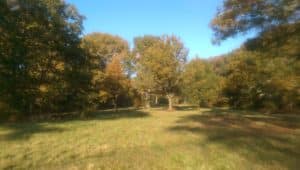Support us from £3/month
We deal with almost 1000 cases a year assisting communities, groups and individuals in protecting their local spaces and paths in all parts of England and Wales. Can you help us by joining as a member?
We have called for a greater recognition of the importance of common land in the new objectives in the Chilterns Area of Outstanding Natural Beauty’s management plan.

We were commenting on the Chilterns Conservation Board’s draft management plan for 2019-2024.
There are nearly 200 commons in the Chilterns covering 2,000 hectares. Many of them are small and neglected, but all provide great public benefit, for access and enjoyment, their history, culture, natural beauty and wildlife. From 2011 to 2015 the conservation board ran an excellent commons project and the society is keen that it should continue to celebrate and recognise the value of the commons.
The society also argues that the draft plan should recognise the opportunities which will arise from the new agricultural-funding regime to reward farmers and landowners for more and better public access; the board could play a part in determining where payments might be targeted to produce the best results for the public. At the same time, says the society, land managers need to understand their obligations with regard to public rights of way and access land—and both should be in exemplary condition in the AONB.
The society adds that the board should be prepared to object to the diversion of public paths where these are not positively in the public interest, and to resist attempts by landowners to move public paths away from properties or to make paths appear private.
The board should promote the concept of Walkers Are Welcome towns as a means of securing greater income from walkers for the local economy and promoting people’s health and wellbeing. Chesham and Henley-on-Thames are accredited Walkers Are Welcome towns and are showing a good example.
Finally, the society argues that the board should encourage the dedication of land as a town or village green, giving local people permanent access rights to land and protecting it from development. This is a particularly useful tool as mitigation from development where it is permitted in the AONB.
Says Kate Ashbrook, our general secretary: ‘We think the draft plan is excellent but have made some suggestions of how it might be strengthened to protect and promote public access and enjoyment, common land and other open spaces—all of which are vital to the Chilterns.’
